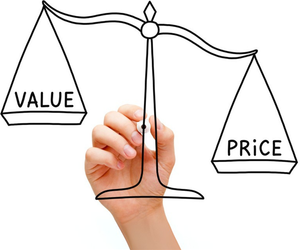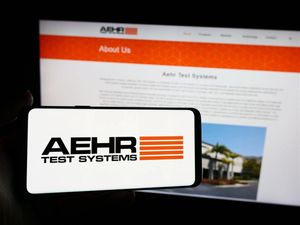What is dividend payout ratio, other than the second-most important metric for income investors after the yield? The payout ratio measures dividend strength and can serve as a deciding factor for many strategies.
We’ll take a deeper look into the dividend payout ratio, the formula and how to use it to determine dividend health.
What is a Dividend Payout Ratio?
What is a dividend payout ratio, exactly?
A dividend payout ratio is a commonly used metric that gauges the health of a company’s dividend distribution. The more that gets paid out in dividends, the less the company can use. It's not always a good thing for dividend stock investors.
Dividend Payout Ratio Formula
Divide the expected dividend payment by earnings to calculate the dividend payout ratio formula. You can do this on a quarterly or annualized basis based on which one has relevance for you. Note that the annualized data is generally more reliable because some businesses are seasonal and may have a payout ratio that fluctuates widely from a quarter to quarter but holds steady over the long term.
The dividend payout ratio formula looks like this:
Dividend Payment / Earnings = Payout Ratio
How to Calculate the Dividend Payout Ratio
Let’s take a look at how to calculate the dividend payout ratio and use it.
Step 1: Investigate the news.
What do websites say? The first step in figuring out dividends payout ratio and what they mean for your investments involves checking the news. This gives you a baseline of what to expect and a starting point to work from if what you discover later on doesn’t match up with your research.
Step 2: Check company data.
After that, check company data using the dividend payments and earnings listed for each company. You may discover a discrepancy because some sites may use trailing twelve-month data (TTM) and others may use forward-looking data. Even so, the figure you get may not be the actual number, so let's insert another step.
Step 3: Get the company’s numbers.
To find out about the most current and realistic dividend payout ratio, go straight to the company and get its numbers, both for earnings and expected earnings and for dividend payments. The reason why you go to the trouble of the first two steps is to find out what the average investor learns from the average website and how it compares to reality. The stock may present a better or worse value than the average investor believes and may also offer opportunities.
Step 4: Check the dividend history.
Dividend distribution data can be used on a TTM, current or future basis, just like earnings, so be sure to check the history. If the stock has a history of dividend increases, you may want to use the most recent payment or the expected upcoming increase to determine the payout ratio. In this case, always use the forward-looking earnings data and compare the results with the current and TTM results as well.
Example of Using the Dividend Payout Ratio
The dividend payout ratio is usually the second of two metrics that dividend investors will check, the first being the dividend. Assuming the investor already has an idea of the payout ratio, it may be all that is required to make the investment decision. A too-high payout ratio not only means the company’s cash flow is restricted but that there is a chance for the dividend to be cut or suspended. If it is a dividend growth stock, it could also cause growth to stop. In all cases, that is bad for share prices.
If the investor doesn’t have an idea of a too-high payout ratio, it's easy to get an idea. For this example, we’ll use the Kraft Heinz Company (NASDAQ: KHC) and the best dividend stock by sector. Kraft Heinz is a consumer staple with a payout ratio of 58%. That compares well with the 51%, 56% and 56% for General Mills Inc. (NYSE: GIS), the Kellogg Company (NYSE: K) and Hormel Foods Co. (NYSE: HRL) which are all packaged foods companies as well. Considering that Kraft Heinz is the highest yielding among the group with a yield of 4% in late 2022, it appears as the most attractive as well.
What Does the Dividend Payout Ratio Tell You?
The dividend payout ratio tells you how much of a company’s earnings are paid as dividends. If the company earns $4 per share and pays $1 in dividends, it has a payout ratio of 25%. This is important because it also tells you how much of a company’s earnings are left for use.
If the company’s adjusted earnings are $400 million and it has a payout ratio of 25%, it still has $300 million left for use. This money could be used to fund operations, expand the business, buy back shares or, even better, increase the dividend. Stocks with the lowest dividend payout ratios have the highest chances of dividend increases and sustaining increases on an annual basis.
Is a High Dividend Payout Ratio Good?
Generally, a high payout ratio is not good, but take that with a grain of salt. The payout ratio is a measure of how much earnings are paid as dividends but not all companies have the same cash needs. A blue-chip company that doesn't grow may not need to reserve capital for reinvestment the way a start-up or growth company does. In this case, a higher payout ratio is a sign of the company’s established position and market dominance and may mean a substantially higher yield as well.
Another example of when a high payout ratio is good: Utilities are in business solely for the purpose of generating income as are REITs. They tend to pay out large amounts of their earnings. In the case of Real Estate Investment Trusts (REITs), they have to pay out at least 90% of their taxable income as dividends so it should be a surprise when the payout ratio isn’t high.
Differences Between Dividend Yield and Dividend Payout Ratio
The dividend yield and the dividend payout ratio are related but have different figures and are among the most important stock metrics for income investors. Where the dividend yield tells you how much to expect in return for your investment, the dividend payout ratio tells you how much of a company’s earnings are paid as dividends.
In this case, it doesn’t really matter how high the payout ratio is as long as it is below 100% and the company doesn’t need the money for other things like bills, updates or expansions. Same for the dividend yield formula, a good dividend yield is one that is sustainable.
The Dividend Payout Ratio is a Measure of Dividend Health
The dividend payout ratio is among the easiest to find dividend statistics and one that can give insight into a company’s health. While a low payout ratio is often relative to the industry group, lower is generally better. However, before making any decisions, always check to make sure the data you’re being given is the right data. Continue learning how to find the best dividend stocks and how to invest in them.
FAQs
Here are the answers to some frequently asked questions about the dividend payout ratio. They won’t tell you how many dividend stocks to own but they can help you pick the right ones.
What is a good dividend payout ratio?
A good dividend payout ratio is one that is sustainable. In all cases, the very best dividends are the ones that are sustainable. Other than that, compare the payout ratio to peers to see how it compares. So, what is a good dividend payout ratio? One that is right for the company and the investor.
What is meant by dividend payout ratio?
The dividend payout ratio is a measure of dividend payments in relation to a company’s earnings. In theory, a company can only pay 100% of its earnings or profits before it starts to return capital.
Is a higher dividend payout ratio better?
A higher dividend payout ratio is not better. In fact, a higher payout ratio is worse because it means a company is already paying out more of its earnings in dividends. It may not be able to increase the distribution in the future.


















